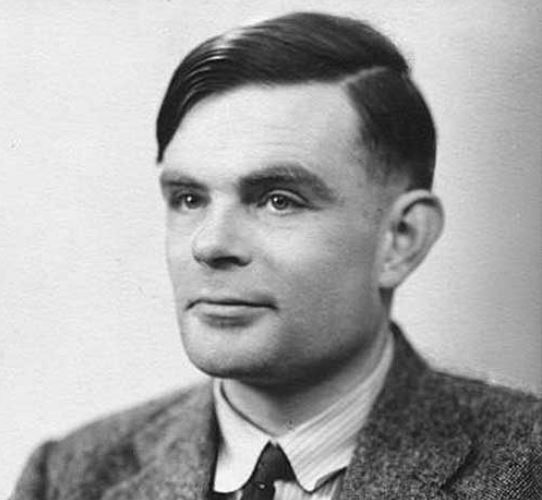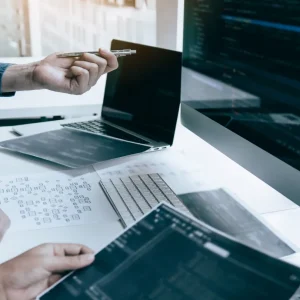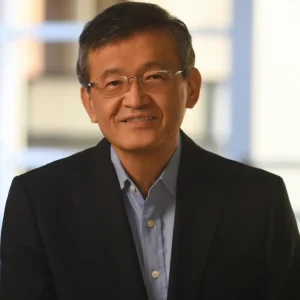
20th of February, 1947
On this day in 1947, the famous British mathematician, Alan Turing, delivered a lecture to the London Mathematical Society on the testing of AI on the game of chess. Within the lecture he covered the topic of training, teaching that machines can also learn when provided with the right material.
At this moment a seed was sewn that has grown into what is today a top technology trend, with enterprises and other major organisations across the world looking to leverage the power of the emerging technology. Technology has transformed the world since 1947, but today we are still looking at artificial intelligence as the cutting edge, much like those being lectured by Turing today 70 years ago.

In the lecture he predicted the excitement that surrounds spaces like deep learning today, he described how intelligent machine could work, said: “Let us suppose we have set up a machine with certain initial instruction tables, so constructed that these tables might on occasion, if good reason arose, modify those tables. One can imagine that after the machine had been operating for some time, the instructions would have altered out of all recognition, but nevertheless still be such that one would have to admit that the machine was still doing very worthwhile calculations.”
AI and chess
Turing was of course proven right, computers became increasingly proficient at chess and by the 1970s even top players were being vanquished routinely. A professor of psychology, Eliot Hearst, of Indiana University wrote in 1976 that “the only way a current computer program could ever win a single game against a master player would be for the master, perhaps in a drunken stupor while playing 50 games simultaneously, to commit some once-in-a-year blunder.”
Hearst was proved wrong, and in the very same year as the bold statement from the professor the first computer won a human tournament, sending Northwestern University’s Chess 4.5 hurtling into the history books. By 1980, the Belle chess machine from Bell Labs was making short work of masters of the game, marking a point at which technology was outpacing even the most advanced human capabilities.

Jumping forwards to 2009 after a great deal more development and achievement in the automated chess space, now slower technology was capable of supporting an engine that could dispatch grandmasters. Around this period a mobile phone was recorded as having won a category 6 tournament with a rating of 2898.
The Turing Test
There is still a great deal of controversy regarding accurate terminology when it comes to artificial intelligence, many take the stance that true intelligence requires free thinking and motivations, traits they would say simply do not yet exist in a machine.
While the debate rumbles on, part of Turing’s legacy is the test that carries his name. The Turing Test came into existence as a method of determining whether a machine could be considered thinking. In this famous test an interrogator must question a machine and a human and try to work out which is which based on answers in text. Turing stated that in the event that the interrogator could not work out which was which successfully; the machine had to be considered to be thinking.
AWS clients alerted to security risks by researchers
UK government backed smart meters could pose cyber risk – GCHQ
UK financial services failing to keep pace in global digital race
This important, early way of determining the intelligence of a machine has helped to drive AI innovation, in fact, Turing peered into the future and made a forecast of how the test would be playing out by the year 2000.
Turing believed that by the beginning of the 21st century the interrogator would have less than 70 per cent chance of being correct after five minutes. Despite advances that exceed the expectation of Turing in terms of storage capacity and processing power, we are still not really any closer to truly passing the test.
Turing’s view of the future
Further presenting his genius, Turing not only theorised the technical progress of AI, but also the reaction from society, which is proving to be an extremely hot topic at this moment in time. The financial services is a prime target for this kind of disruption, replacing roles that once required advanced mathematical and organisational skills with algorithms, but many argue that these changes are simply progress, meaning that this technology is an augmentation rather than a replacement.
“The masters are liable to get replaced because as soon as any technique becomes at all stereotyped it becomes possible to devise a system of instruction tables which will enable the electronic computer to do it for itself,” Turing said today in 1947.

“They may be unwilling to let their jobs be stolen from them in this way. In that case they would surround the whole of their work with mystery and make excuses, couched in well-chosen gibberish, whenever any dangerous suggestions were made.”
Turing warned that fear could hamper innovation and progress, encouraging the world to see that humans would still be needed to monitor the machines and to maintain them. This argument is applicable to the arguments made by many organisations that are pushing AI, an opinion that is one half of a very hotly debated topic.
“One must therefore not expect a machine to do a very great deal of building up of instruction tables on its own. No man adds very much to the body of knowledge, why should we expect more of a machine? Putting the same point differently, the machine must be allowed to have contact with human beings in order that it may adapt itself to their standards.”






